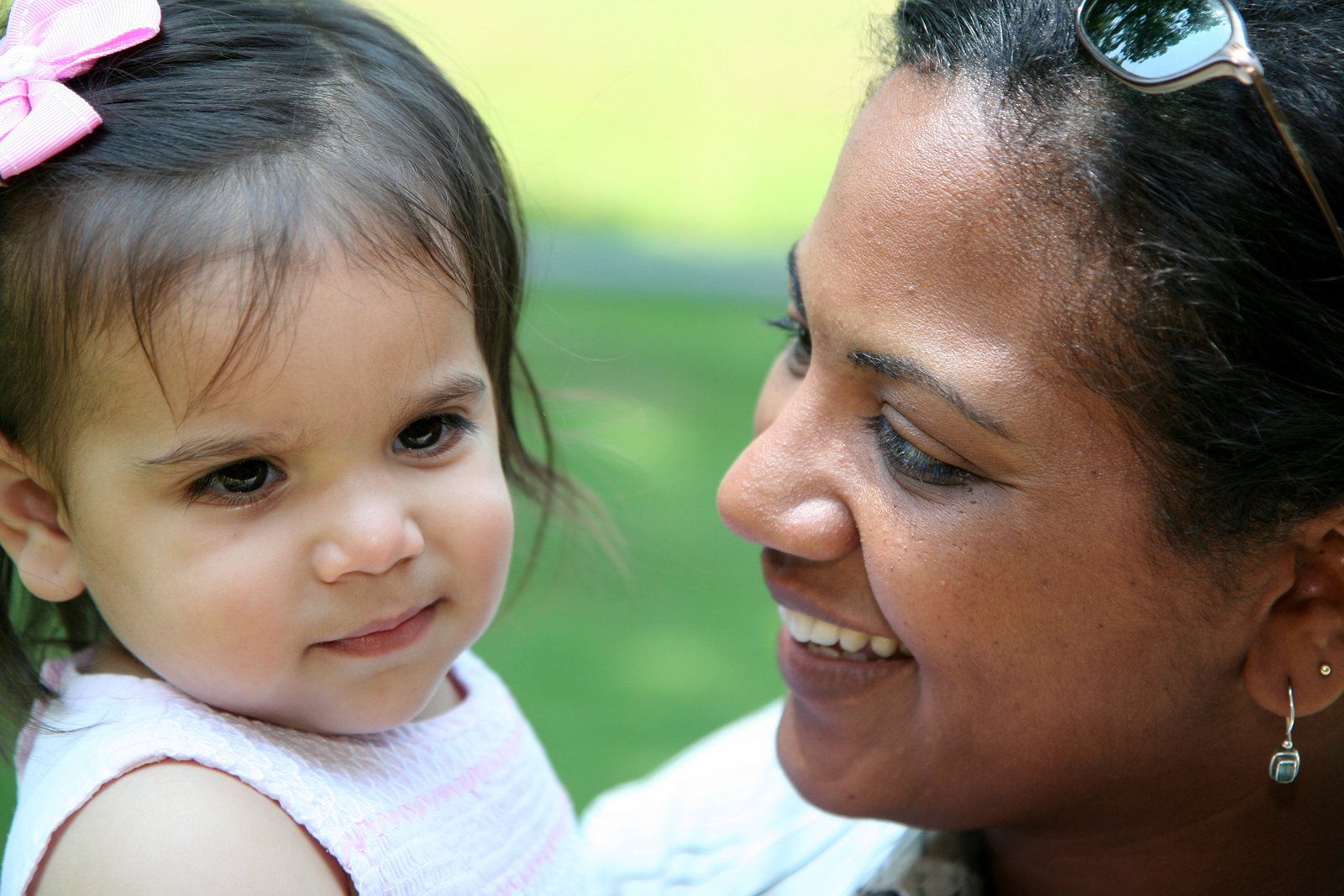Communication Approaches for a Child Who is Deaf or Hard of Hearing
One of the first and most challenging decisions now that you have a child who is deaf or hard of hearing, is selecting HOW you will communicate with your child. The purpose of this article is to introduce the basic communication approaches for communicating with a deaf child. Let’s begin with some definitions and important distinctions:
Communication: the exchange of thoughts, messages, or information
Language: a system of symbols that is used for communicating, such as English, French, or American Sign Language. Symbols of language can be in the form of signs, speech, or printed words.
Consistent exposure to language is essential for an infant to develop language. In conjunction with early detection and amplification (hearing aids, cochlear implants, etc.), these communication approaches can provide children who are deaf or hard of hearing access to consistent language exposure. There are two general ways of communicating (1) visual/signing and (2) listening and speaking. The communication approach you select for your child and family may use one or a combination of these general ways of communicating.
Visual/Signing Communication
This is a broad category of communication and may include signing English or American Sign Language (ASL). Signed English systems focus on signing every word that is spoken in an effort to make spoken English visual. Sentence structure and word order remain exactly the same in Signed English as spoken English. American Sign Language (ASL), on the other hand, is its own unique, highly visual language, that has developed naturally over time. Much like French or Spanish, word order and sentence structure of ASL does not match that of English, since ASL is a separate language. Your child may be giving clues that he or she prefers visual communication if he/she:
- Uses sight to explore the environment and is visually active.
- Wants visual information from people when communicating (facial expressions, gestures, signs, etc.) and uses his/her own gestures and facial or body expression to express.
- Does not seem interested or aware of sounds and voices in his/her environment.
- Needs signs/gestures to understand what is said.
Listening/Speaking
Individuals who are deaf or hard of hearing who communicate in this way use a combination of speaking, listening, and/or lip reading to communicate. Use of amplification (hearing aids or cochlear implants) helps children and adults hear sounds and speech. One specific method is called “Aural-Oral” and emphasizes amplification, listening (aural skills) and speaking (oral skills) and may include speech reading to support hearing. Auditory-Verbal approaches, on the other hand, heavily stress amplification and listening to develop speech and language. No instruction is given on speech reading. “Cued Speech” is a third approach. It uses handshapes to visually represent the sounds of spoken language. Cued speech is not a language but a representation of the sounds. Your child may succeed with listening and speaking if he/she:
- Is able to attend to and orient to sounds.
- Enjoys hearing voices and appears to attend to conversations.
- Is able to or tries to imitate vocalizations of others when babbling.
- Enjoys wearing hearing aids/cochlear implants and is more alert and responsive when wearing them.
Combined Communication
Many families choose to combine visual/signing and listening/speaking to maximize all possibilities for the child to learn. These methods are often called “Total Communication”, in which one or several modes of communication (spoken, written, pictures, gestures, listening, speech reading, amplification etc.) are combined to meet the child’s unique needs. Two common total communication approaches are Simultaneous Communication and Bilingualism-Biculturalism. Simultaneous Communication involves speaking while signing (ASL, Signed English, etc) at the same time. With this system, the child watches and listens to the speaker and communicates while voicing and signing what he says. Bilingualism-Biculturalism (Bi-Bi) is an approach that focuses on learning, respecting, and using two languages and two cultures. When talking about children with hearing loss, Bi-Bi refers to the ASL and English Languages and the hearing and Deaf cultures. Families using Bi-Bi will communicate using ASL combined with some form of English, such as ASL + Signed English or ASL + Cued Speech.
Your audiologist, early intervention team, and other therapy professionals will be able to provide you with more in depth information on these communication options and may guide you through this choice. As your child’s parent, trust that you will know best what method will fit your child’s and family’s needs. There is no one “best” approach or one that is perfect for all families. When making the decision, evaluate your child’s and family’s needs and strengths. Keep an open mind and recognize that your child and family will develop and change and you may need to re-evaluate which approach you choose. That is perfectly okay. Remember, you are in the best position to make this decision as you know your child and family best. There is no perfect approach; there is no wrong one! Your commitment to your choice will make the biggest difference in its success.
REFERENCE
Watkins, S., Johnson-Taylor, D., & Pittman, P. (Eds.). (2004). SKI-HI Curriculum: Family-Centered Programming for Infants and Young Children with Hearing Loss. (Vols. 1-2). New Logan, UT: HOPE, Inc.

